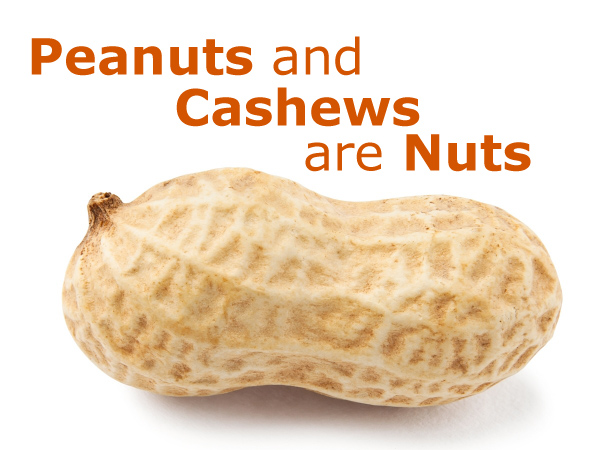Are peanuts and cashews nuts?
The botanical classification of a “nut” is a dry fruit with one or two seeds, contained, unattached, within a hard shell, which does not open until maturity. Examples are acorns, hazelnuts and chestnuts.
Peanuts are not nuts but legumes, belonging to the same family as beans and peas. Rather than growing on a tree, peanuts grow underground as pods attached to the plant’s root structure. The peanut plant first appeared in South America at least 7,000 years ago.
Cashews are not nuts, but seeds from the fruit of the cashew tree, a tropical plant that can grow to 40 feet or higher. Cashews are heavily processed before being sold to the consumer because their shell contains a toxic oil called cardol. Cardol, which is related chemically to poison ivy, is so toxic that the cashews must be processed by machine instead of by hand and even the smoke produced by the roasting process can cause severe lung damage.
Although technically not nuts, peanuts and cashews are commonly called nuts and have similar culinary uses as true nuts. Other non-nuts: almonds, pecans and walnuts!




